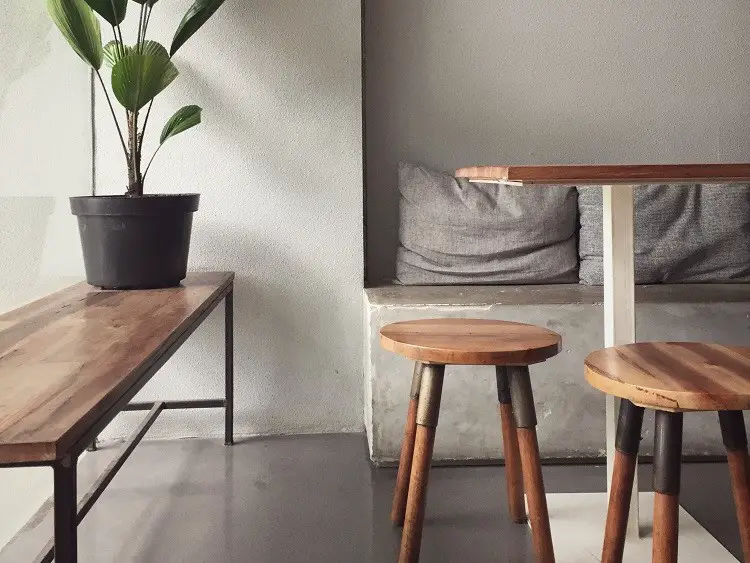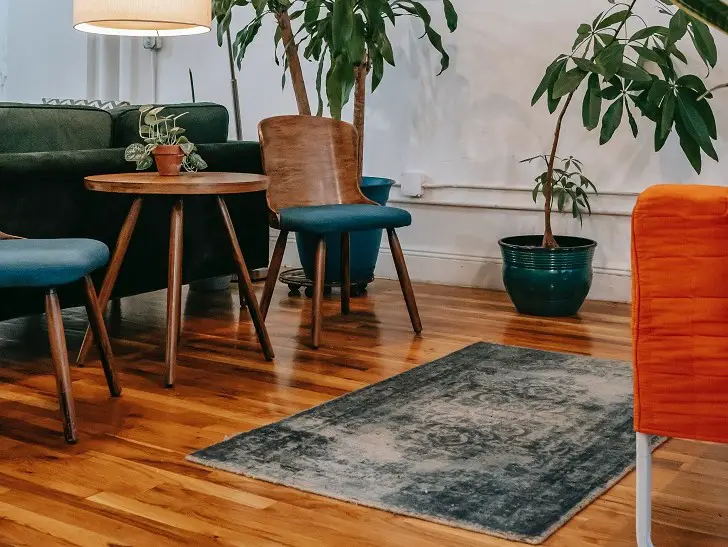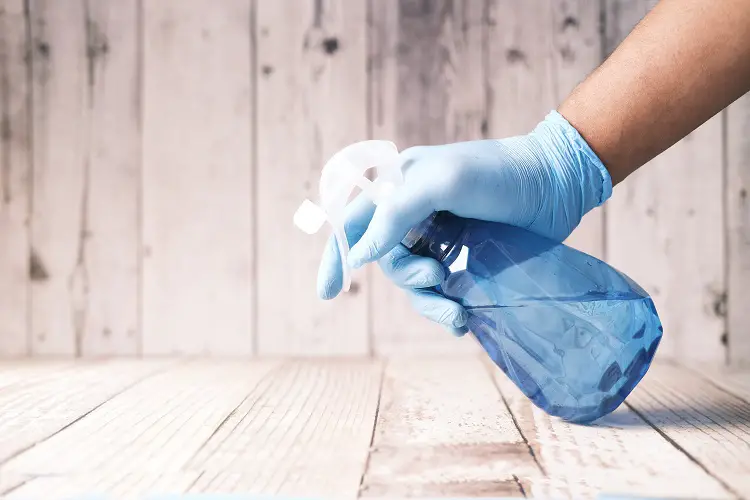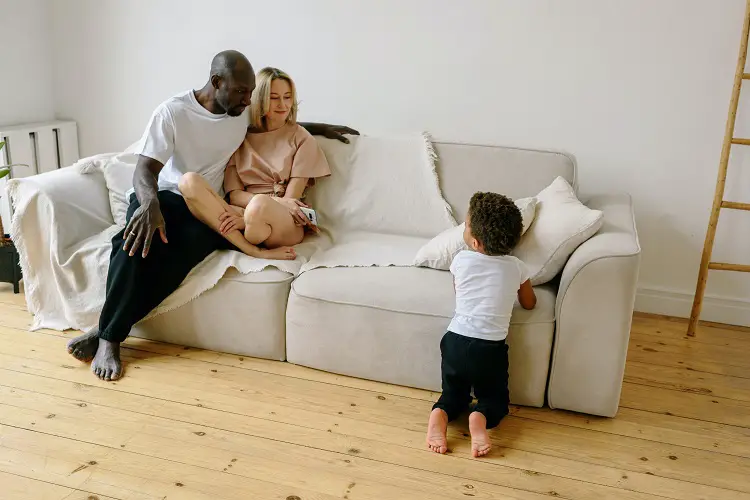Wherever there’s a baby stain follows, and sometimes these stains can be huge. Are you wondering how to get breast milk off of wood furniture or any of your household items?
As parents, it’s almost inevitable to get your kids to drink in the most likely places you want them to, especially when they can carry their Sippy cups around the house.
Breast milk is a strong bonding protein that is difficult to remove, especially when dry, and impossible to remove after being left for a long time due to all the ingredients.
Read on to learn everything you need to know about removing stains from your wood furniture, carpets, upholstery, clothes, ceramic glass/tile, marble, fur, and leather and why these stains appear.
Breast Milk Stain Removal 101
Below are instructions for getting breast milk off wood furniture, carpet, clothes, upholstery, and several other household items, so you don’t have to cry over spilled milk or cream stains. Remember, the quicker you treat the stains, the easier for you.
Things You’ll Need:
- Clean cloth or wipes
- Clean Water (Hot or Cold, depending)
- Dishwashing detergent
- Dry-cleaning solvents
- Absorbent Pad
- A soft brush
How To Get Breast Milk Off Of Wood Furniture

- Firstly, make a mixture using a dishwashing detergent and hot water and then swish to create a great volume of suds.
- Now dip a clean cloth in only the foam and apply.
- Afterward, rinse using a clean cloth dipped in clear water, squeeze, and dry.
- Finally, polish or wax immediately.
Alternatively, you can use Lysol wipes to remove breast milk from your wood furniture. They work great too.
How To Get Breast Milk Off Of Your Fabric And Clothing
- Run the clothing inside out, using cold (not warm or hot) water to remove excess milk as much as possible.
- Pretreat the affected areas using liquid laundry detergent containing enzymes like this one.
- After that, soak the fabric for about 20-30 minutes in cold water. Alternatively, pretreat using an enzyme stain remover. Remember, try not to use hot water when doing this. If the stain has sat longer, you may need to soak the fabric even longer, perhaps even overnight.
- Finally, launder as usual.
How to Remove Breast Milk and Cream Stains From Fur/Natural, Fur/Synthetic
- Remove any excess spill.
- Make a solution using dishwashing detergent and hot water, then swish to create suds.
- After this, dip a clean cloth in only the foam and apply it to the stained area.
- Then wipe clean using a clean, dry cloth if the stain proves stubborn, powder it with an absorbent and then leave it for some time to work.
- Using a soft brush, brush out the powder and then rinse the affected spot with a damp cloth. Allow fur to air dry.
How To Get Breast Milk Stains From Upholstery
- Firstly, remove any excess milk stains from the upholstery, be careful to avoid spreading the spot or grinding it into the upholstery.
- Then make a solution by mixing two cups of cool water and one tablespoon of dishwashing liquid.
- Gently sponge the stain with a clean white cloth using the solution.
- After this, blot at the affected spot until the liquid is absorbed.
- Repeat steps 3-4 until the stain is removed from the upholstery.
- Finally, get plain cold water and a clean white cloth and sponge the affected area to wipe off the cleaning solution, afterward blot dry.
Pro Tip:
Make sure to get the upholstery only as wet as possible to remove the stain from the milk. Alternatively, you can use a dry cleaning solvent to remove the stain.
How To Remove Breast Milk And Cream Stains From Vinyl Tile, Acrylic Plastic, Aluminum
- Remove any excess spills as soon as possible.
- Wipe the affected area with a clean cloth or sponge dipped in warm, sudsy water.
- Then rinse properly and wipe it dry.
Pro Tip:
You can also use these steps to remove breast milk stains from stainless steel, bamboo, ceramic, brass, bronze, cane, glass/tile, copper, cork, enamel, glass, gold, iron, ivory, linoleum, paint/flat, paint/gloss, pewter, platinum, Plexiglas, polyurethane, porcelain dishes, asphalt, tin, vinyl clothing, vinyl wall covering, and zinc.
How To Get Breast Milk Off Of Carpet/Synthetic, Carpet/Wool, Fiberglass, Rayon, Rope, Silk, Wool/Non-Washable

- Remove any excess milk stains as soon as possible.
- Then sponge gently using a dampened pad working outward from the center of the stain with your dry-cleaning solvent like Afta Cleaning Fluid.
- After this, apply a dry spotter to the affected area and cover it with an absorbent pad dampened with a dry spotter.
- Allow it to stand for 10-20 minutes or as long as any stain is removed. Change the absorbent pad as it mops up the stain. Keep the pad and stain moist with a dry spotter and then flush using a dry-cleaning solvent.
- If any stain-proof is stubborn, use an enzyme stain remover but remember to read the directions on the label because some enzyme presoaks are not designed for use on wool or silk.
- When using enzyme stain remover, cover it with your clean pad dipped in the solution and squeeze almost dry, and then leave it to stay for some time.
- Add more solutions if required to keep the affected area warm and damp, but try not to allow the wet area to spread.
- When you feel the stains are no more, flush the affected area thoroughly with water and allow it to dry.
How To Remove Breast Milk Stains From Acrylic Fabric, Cotton, Wool/Washable
- Remove any excess matter as soon as possible. Gently sponge the affected area with K2r Spot Lifter or Afta Cleaning Fluid.
- Use a dry spotter and cover the affected area with an absorbent pad dampened with a dry spotter.
- Allow it to stay 10-20 minutes or as long as the stain is removed.
- When doing this, remember to change the pad as it mops up the stain. Keep the affected area and pad moist with a dry spotter, and then flush with your liquid dry-cleaning solvents.
- If any stain proves stubborn, add a few drops of dishwashing detergent and ammonia to the affected area, then gently brush or scrape to remove any excess solid stains. Remember to moisten the stain using a detergent and ammonia while blotting with an absorbent pad.
- Finally, use clean water to flush out all ammonia while allowing it to dry.
Pro Tip:
You can also use these steps to remove breast milk stains from olefin, polyester, nylon, and linen.
How To Remove Breast Milk And Cream Stains From Marble, Alabaster
- Remove any excess spill immediately.
- Then make a mixture using a few drops of ammonia with 1 cup of rubbing alcohol.
- Now soak a white blotter (just about the size of the stain) in the solution and place it all over the affected area.
- Cover it with a heavy object while keeping the solution until the oil has been removed and any leftover stain has bleached out.
- Make a poultice from bleach, water, and powdered detergent if any stain proves stubborn. Then rub it on the stain. Make sure you cover it with a damp cloth to minimize drying.
- Finally, remove when the stain has been removed.
Read Also: How To Get Breast Milk Out Of Mattress
How To Remove Breast Milk And Cream From Bluestone, Brick, Concrete, Flagstone, Granite
- Remove any excess immediately.
- Wash the affected area with washing soda or laundry detergent (try not to use soap) and water.
- Use a clean cloth or gently brush the stained area.
- Finally, clean the stained area thoroughly with clean water and allow it to dry.
Pro Tip:
You can also use these steps to remove breast milk stains from Limestone, Masonry Tile, Sandstone, Slate, and Terrazzo.
How to Remove Breast Milk and Cream Stains From Grout
- Remove any excess spill with a cloth dipped in warm, sudsy water.
- Dip a wet toothbrush into a powdered cleanser for leftover stains and scrub gently at the affected spot.
- Finally, rinse it properly and wipe it dry with a clean cloth.
How to Remove Breast Milk and Cream Stains From Leather Fabric
- Blot any leftover stains from the surface.
- Create a solution using mild soap in lukewarm water and then swish to create huge suds.
- After this, apply the foam with a sponge on the stain and wipe it with a clean, dry cloth.
- For leftover stubborn stains, powder the stain with an absorbent. You can use cornmeal.
- After this is done, leave it for some time for it to work, and gently brush it out afterward.
- Repeat the steps if necessary, but apply Leather Honey Leather Conditioner or Fiebings Saddle Soap to condition the leather.
- If the stains persist after applying the absorbent and brushing it off, use Leather Honey Leather Conditioner or any other liquid leather cleaner you find effective. Apply it with a clean, soft cloth and leave it to dry—finally, condition it as usual.
Read Also: How To Get Cat Pee Smell Out Of Leather Couch
How to Remove Breast Milk and Cream Stains From Suede
- Remove any excess spill from the surface of the fabric.
- Create a mild soap solution in lukewarm water and swish to create huge suds.
- Apply only the foam with a sponge and then wipe with a clean, dry cloth.
- If the stain persists, powder the affected area with an absorbent and leave it for some time to work.
- Finally, brush the stains out gently.
How to Remove Breast Milk and Cream Stains From Wallpaper
- Remove any excess spill carefully.
- Dip a clean cloth or sponge in cool, clear water, then squeeze it almost dry. Use a cloth to wipe the stained area. Remember to overlap strokes to prevent streaking.
- Finally, gently pat the stained area dry.
Related Posts:
- How To Clean Baby Oil off Floor
- How To Whiten Baby Clothes Without Bleach
- How To Prevent Breast Milk Stains (5 Tips To Try)
- How To Get Pee Smell Out Of Carpet From Dog
Why Does Breast Milk Stain Occur?
You may be wondering why breast milk causes stains around your home.
Interestingly, Mother Nature has built our bodies to produce milk rich in vitamins and contains the required healthy nutrients your baby needs for their growth and development.
Breast milk stains, just like blood, feces, and dairy products, are termed protein-based stains.
These stains are caused by animal-based waste products, which must be treated on time or kept away from heat since they require enzymes to break them down.
If these stains are not treated correctly, they can cause stains that could last months to even years, especially if you store your fabrics or clothing in an airtight plastic container.
We hope this article has given in-depth knowledge on how to get breast milk off wood furniture.
Although this might take some time to master at first, with a little patience, you’ll soon become a pro and find yourself sharing tips you’ve learned to other parents who might desperately need them.

